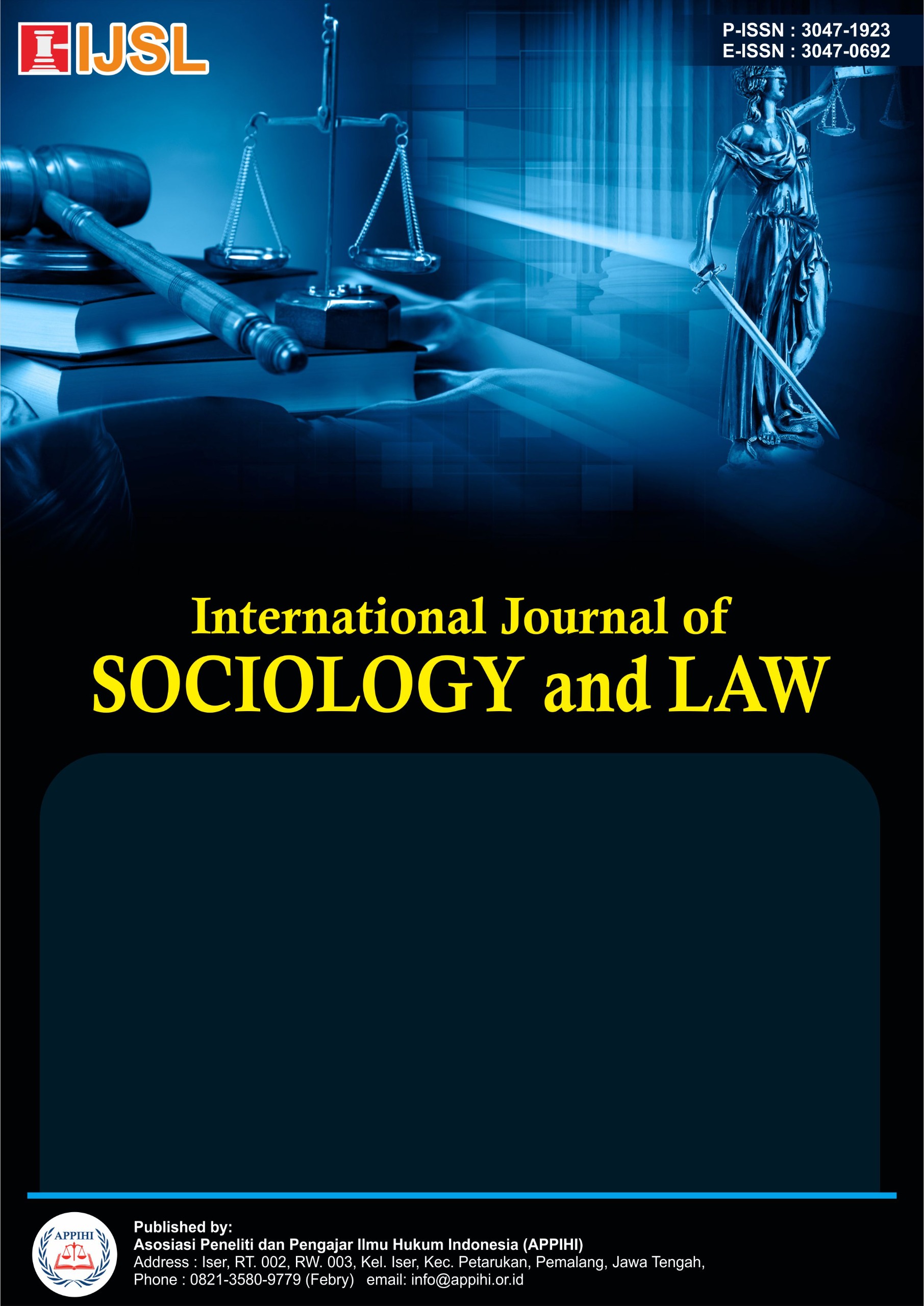A Study on the Implementation of a Complete Systematic Land Registration Program in Bunut Sub-District, Pelalawan District
DOI:
https://doi.org/10.62951/ijsl.v2i2.564Keywords:
Collaborative governance, Complete Systematic Land Registration (PTSL), Land administration, Policy implementationAbstract
This study analyzes the effectiveness of multi-stakeholder collaboration in the implementation of the Complete Systematic Land Registration (PTSL) program in Bunut District, Pelalawan Regency. The PTSL program as a government effort to provide legal certainty over land ownership requires cooperation from various stakeholders in its implementation. With a qualitative approach and case study design, this study uses the collaborative governance framework from Emerson et al. (2012) to analyze three main dimensions of collaboration: principled engagement, shared motivation, and capacity for joint action. Data were collected through in-depth interviews with 27 informants, participant observation, focus group discussions, and documentation studies. The results of the study indicate that multi-stakeholder collaboration in the implementation of PTSL in Bunut District shows varying effectiveness in various dimensions. In the principled engagement dimension, collaboration is quite effective in the aspects of discovery and definition, but is still limited in the aspects of deliberation and determination. In the shared motivation dimension, there are limitations in building mutual trust and understanding between the community and technical agencies. Meanwhile, in the capacity for joint action dimension, there are strengths in the aspects of procedural arrangements and leadership, but significant limitations in the aspects of knowledge and resources. Supporting factors for collaboration include political commitment, community awareness, the role of traditional leaders, effective communication platforms, and academic involvement. Meanwhile, inhibiting factors include differences in interests between stakeholders, limited technical capacity at the village level, communication and coordination problems, historical land complexity, and budget constraints. The study recommends strategies to increase the effectiveness of collaboration through strengthening multi-stakeholder forum institutions, developing technical capacity, increasing transparency and accountability, developing effective conflict resolution mechanisms, strengthening the role of village governments, and allocating adequate resources. The research findings contribute to the development of collaborative governance theory in the Indonesian context, especially in rural areas with unique socio-cultural characteristics.
Downloads
References
Ansell, C., & Gash, A. (2008). Collaborative governance in theory and practice. Journal of Public Administration Research and Theory, 18(4), 543–571.
Cahyono, A. (2020). Peran pemerintah desa dan tokoh adat dalam implementasi program PTSL di Kabupaten Indragiri Hulu. Jurnal Administrasi Publik, 5(2), 87–99.
Edwards III, G. C. (1980). Implementing public policy. Congressional Quarterly Press.
Emerson, K., Nabatchi, T., & Balogh, S. (2012). An integrative framework for collaborative governance. Journal of Public Administration Research and Theory, 22(1), 1–29.
Hermit, H. (2009). Teknik penyelesaian sengketa pertanahan. Mandar Maju.
Ismail, N. (2020). Problematika implementasi program Pendaftaran Tanah Sistematis Lengkap (PTSL) dalam rangka mewujudkan pemberian kepastian hukum. Jurnal Hukum dan Pembangunan, 50(1), 44–60.
Kurniasih, D., Setyoko, P. I., & Imron, M. (2017). Collaborative governance dalam penguatan kelembagaan program sanitasi lingkungan berbasis masyarakat (SLBM) di Kabupaten Banyumas. Sosiohumaniora, 19(1), 1–7.
Mujiburohman, D. A. (2018). Potensi permasalahan pendaftaran tanah sistematis lengkap (PTSL). Bhumi: Jurnal Agraria dan Pertanahan, 4(1), 88–101.
Nugroho, A. (2022). Implementasi program Pendaftaran Tanah Sistematis Lengkap di Kabupaten Pelalawan. Jurnal Ilmu Administrasi Publik, 7(1), 45–59.
Provan, K. G., & Kenis, P. (2008). Modes of network governance: Structure, management, and effectiveness. Journal of Public Administration Research and Theory, 18(2), 229–252.
Purwanto, E. A., & Sulistyastuti, D. R. (2015). Implementasi kebijakan publik: Konsep dan aplikasinya di Indonesia. Gava Media.
Rachman, F. (2019). Analisis kolaborasi pemangku kepentingan dalam percepatan pendaftaran tanah sistematis lengkap di Kabupaten Boyolali. Jurnal Ilmu Pemerintahan, 4(2), 89–102.
Rahmawati, S. (2023). Partisipasi masyarakat dalam program Pendaftaran Tanah Sistematis Lengkap di Kecamatan Pangkalan Kerinci. Jurnal Administrasi Negara, 8(1), 67–82.
Saputra, R. (2021). Koordinasi antar lembaga dalam implementasi program PTSL di Kabupaten Kampar. Jurnal Kebijakan Publik, 6(2), 112–124.
Silviana, A. (2021). Implementasi program Pendaftaran Tanah Sistematis Lengkap dalam rangka pembenahan administrasi pertanahan di Kabupaten Semarang. Administrative Law & Governance Journal, 4(1), 69–84.
Sulaeman, A., Mustanir, A., & Muchtar, A. I. (2022). Collaborative governance dalam penyelesaian sengketa pertanahan di Kabupaten Sidenreng Rappang. Jurnal Ilmiah Ilmu Administrasi Publik, 12(1), 218–229.
Thomson, A. M., & Perry, J. L. (2006). Collaboration processes: Inside the black box. Public Administration Review, 66, 20–32.
Van Meter, D. S., & Van Horn, C. E. (1975). The policy implementation process: A conceptual framework. Administration & Society, 6(4), 445–488.
Widodo, S., Subarsono, A., & Purbokusumo, Y. (2019). Collaborative governance dalam program sertifikasi tanah di Provinsi DIY. Journal of Governance and Public Policy, 6(1), 97–113.
Downloads
Published
How to Cite
Issue
Section
License
Copyright (c) 2025 International Journal of Sociology and Law

This work is licensed under a Creative Commons Attribution-ShareAlike 4.0 International License.





